

“Every so often, the centenarian Guillermo Núñez would sit and talk with his dead friends. They would visit him in the form of ghosts and reminisce about the old days. Meanwhile, he would paint engravings that he would later hand out around town and then file in his studio. The ghosts would whisper about their life's scars into his ear, and Guillermo Núñez would draw them on paper. And so, for years, he filled millions of pages with ink.
By his 200th birthday, Guillermo Núñez had piled up a million engravings in columns that filled every corner. There was no town to hand out any more artwork to and no more room in the house. The ghosts had grown tired of the artist's audacity to live so long and conspired against him.
When Guillermo Núñez was finishing one of his most prized series, his ghosts knocked down a column of prints, causing a massive hecatomb. The heaps of prints collapsed upon him in a domino effect, leaving him buried under tons of paper.
Guillermo Núñez, the distinguished master of Chilean art, never painted again. Instead, he joined the ghost union. Since then, he has been tasked with visiting other artists, telling them of his scars, experiences, and a fair fill of jokes.”
“Cada cierto tiempo, el centenario Guillermo Núñez se sentaba a conversar con sus amigos muertos. Lo visitaban en forma de fantasmas, y juntos recordaban los viejos tiempos. En tanto, él pintaba grabados que luego repartía entre el pueblo y archivaba en su taller. Los fantasmas le describían al oído las cicatrices de sus vidas y Guillermo Núñez las dibujaba en el papel. Así, durante años, llenó de tinta millones de páginas.
Para su cumpleaños número doscientos, Guillermo Núñez acumulaba un millón de grabados apilados en columnas que lo llenaban todo. Ya no había pueblo al que repartir más obras de arte, ni tampoco espacio en la casa. Los fantasmas se habían cansado de la osadía del artista para vivir tantos años y conspiraron contra él.
Cuando Guillermo Núñez terminaba una de sus series más preciadas, sus fantasmas derribaron una columna de grabados, lo que provocó una hecatombe de enormes proporciones. En efecto dominó, las montañas de grabados colapsaron sobre él, dejándolo sepultado bajo toneladas de papel.
Guillermo Núñez, el insigne maestro del arte chileno, nunca más volvió a pintar. En vez de eso, se sumó al sindicato de fantasmas. Desde entonces, fue el encargado de visitar a otros artistas para contarles sus cicatrices, vivencias y muchos chistes.”
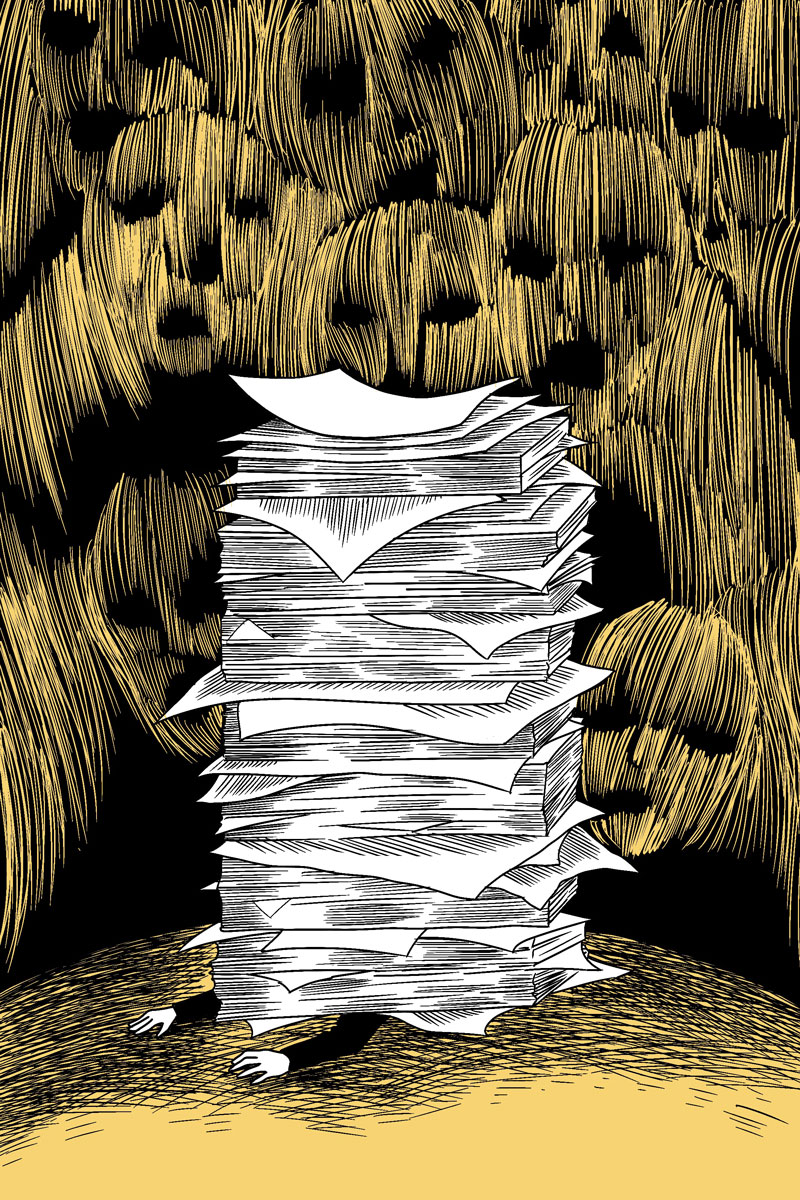
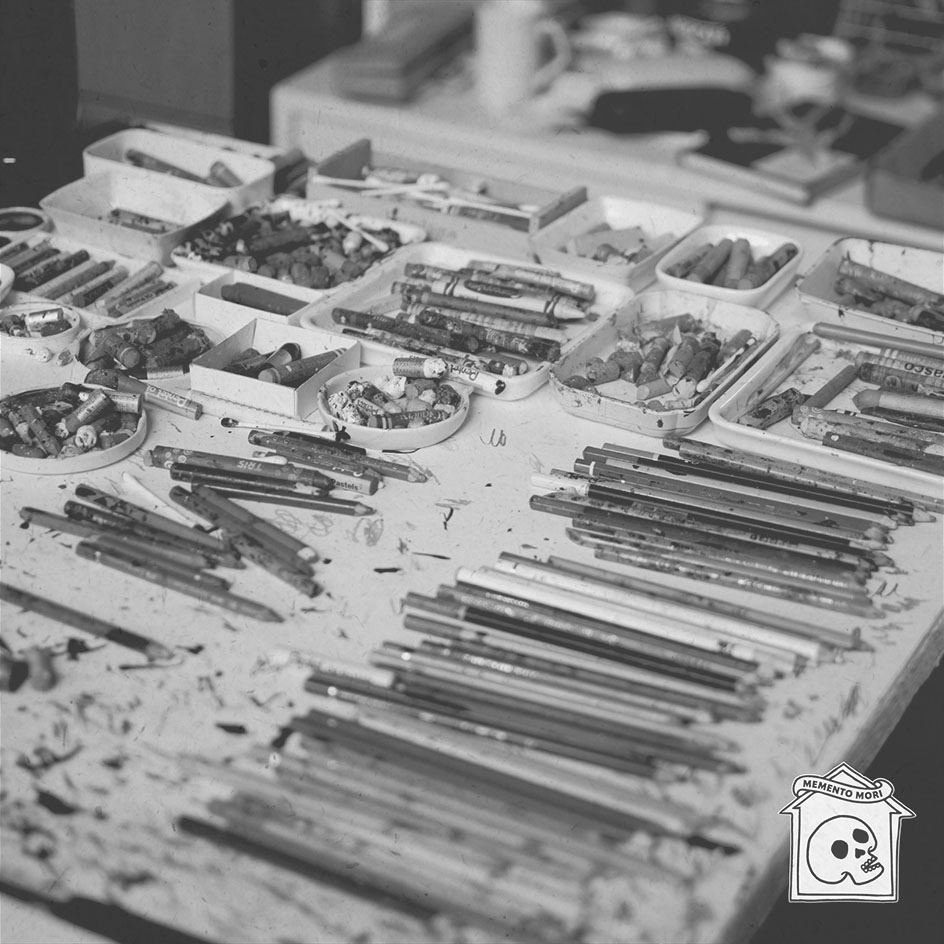
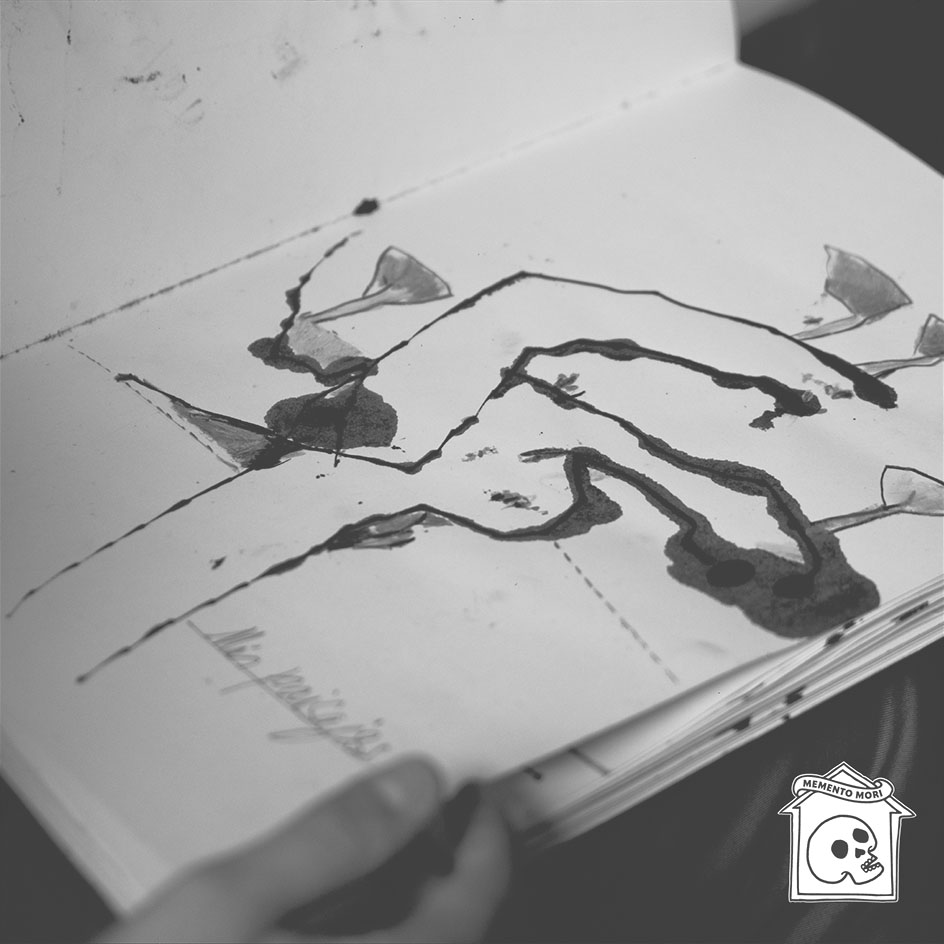
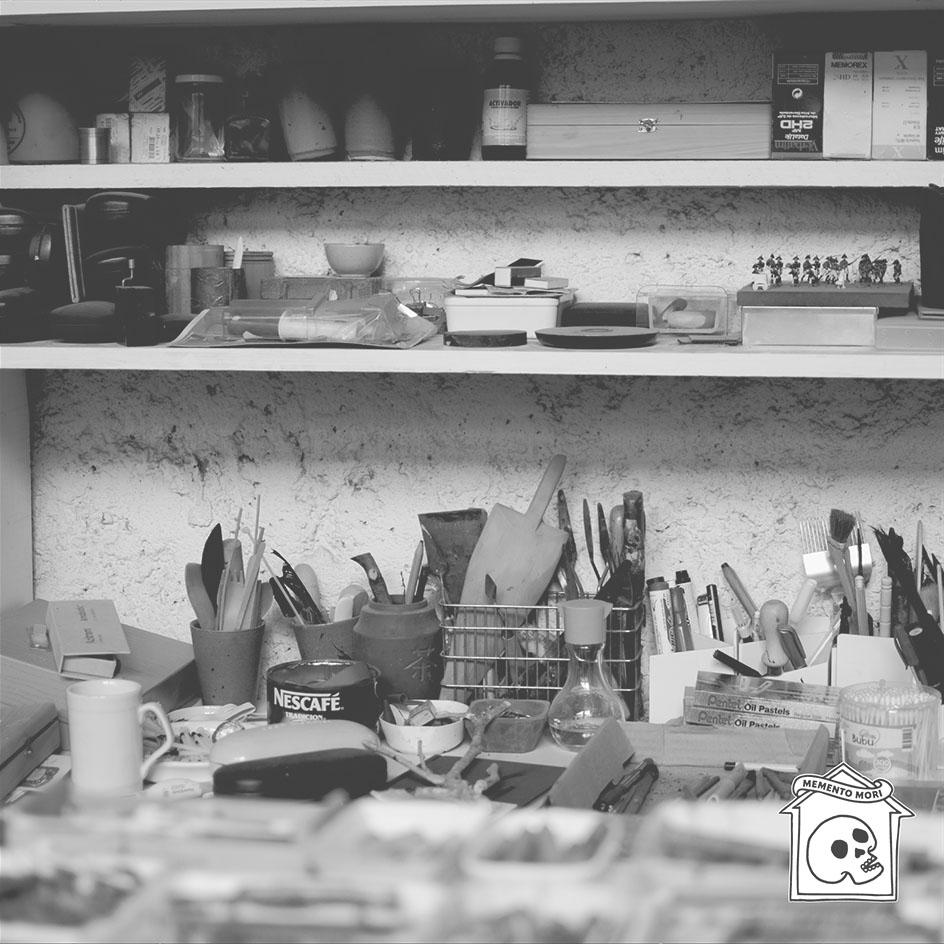
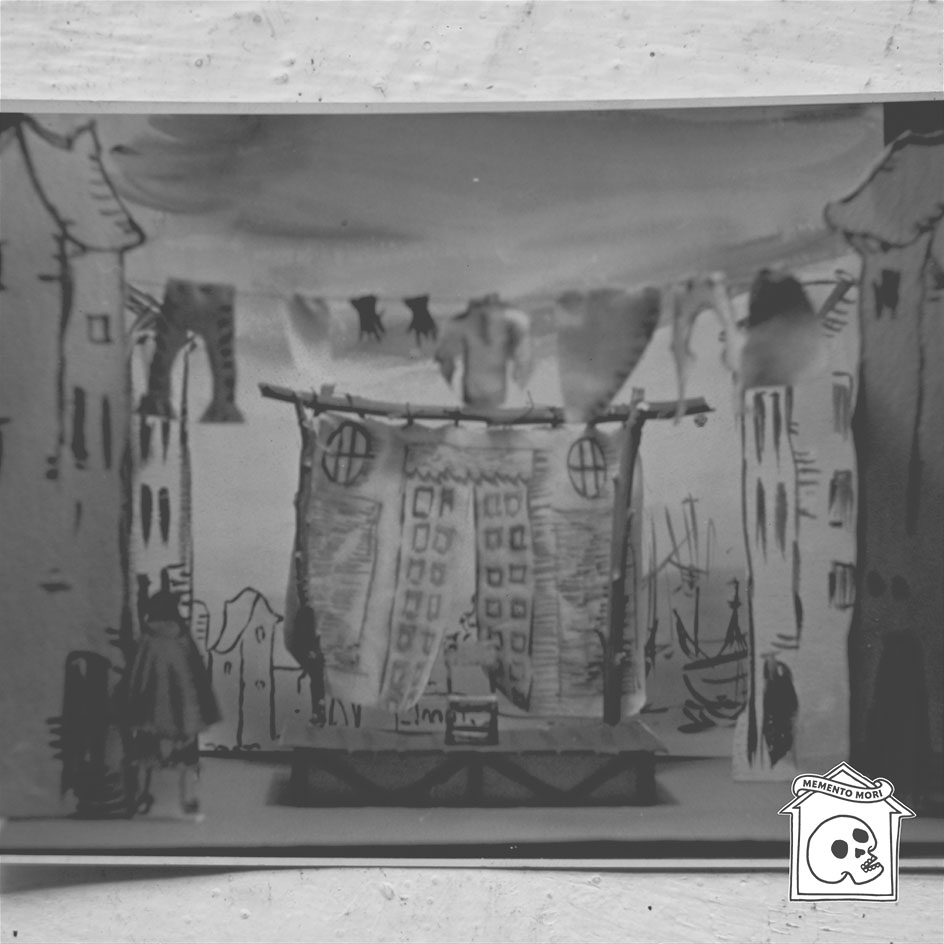


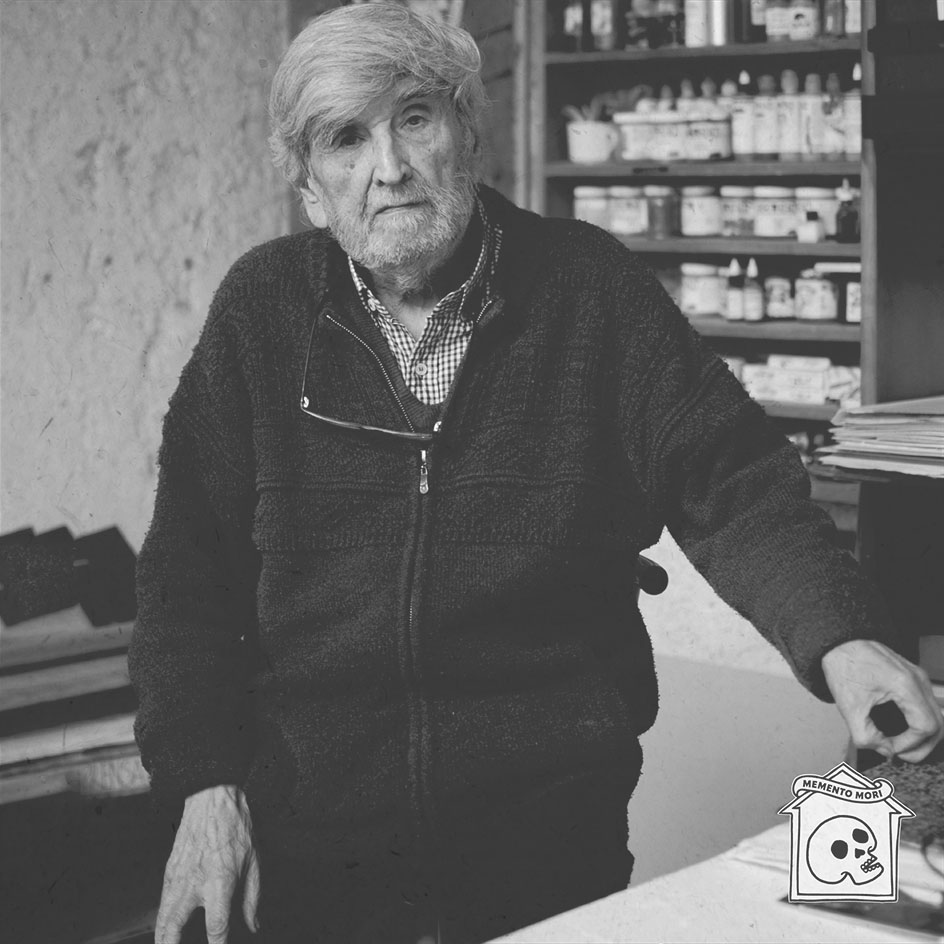
Guillermo Núñez (Santiago, 1930) was a renowned Chilean visual artist and theater designer. He ventured in installation, drawing, serigraphy, photo-serigraphy, scenography, poetry and costume design. In 1949 he began his studies at the Theater School of the University of Chile, later continuing his studies at the School of Visual Arts of the same university. As part of his training, in 1959, he studied engraving at UMPRUM, Academy of Applied Arts in Prague, Czechoslovakia, on a scholarship from the Czech Ministry of Culture. He served as director of the Chilean Museum of Contemporary Art between 1970 and 1971. In 1975, he was arrested and expelled from the country; he lived in France until his return in the 1980s.
He began working with the Experimental Theater of the University of Chile in 1948, when stage design was understood solely as scenery.
In the 1960s, he stopped working in theater, as his works had become increasingly auteuristic, a problem because, at the time, design was considered to be strictly at the service of the literal representation of the play and its direction. In spite of his departure, he succeeded in working as a set and costume designer for iconic Chilean directors such as Pedro Orthous, Eugenio Guzmán, Agustín Siré, Víctor Jara, Pedro Morteiro, Domingo Tessier and Jorge Lillo.
In Germany, in the 1980s, he once again worked as a set designer for a version of Pablo Neruda's "Fulgor y Muerte de Joaquín Murieta"; a play he had previously premiered in Chile.
During his lifetime, Núñez referred to stage designers as "the invisible orchestra".
Guillermo Núñez (Santiago, 1930) fue un destacado artista visual y diseñador teatral chileno. Incursionó en la instalación, el dibujo, la serigrafía, la fotoserigrafía, la escenografía, la poesía y el diseño de vestuario. En 1949 inició sus estudios en la Escuela de Teatro de la Universidad de Chile, para luego trasladarse a la Escuela de Bellas Artes de esta misma institución. Como parte de su formación, en 1959 estudió grabado en UMPRUM, Alta Escuela de Artes Aplicadas de Praga, Checoslovaquia, habiendo sido becado por el Ministerio de Cultura de ese país. En 1970 y 1971 fue director del Museo de Arte Contemporáneo. En 1975, fue detenido y expulsado del país; vivió en Francia hasta su retorno en la década de los ochenta.
Empezó a trabajar con el Teatro Experimental de la Universidad de Chile el año 1948, cuando el diseño escénico era concebido solamente como un trabajo de decorados.
En la década de los 60 dejó de trabajar en teatro, sus obras tomaron un ribete autoral, lo cúal significaba un problema considerando que en esa época el diseño era concebido al servicio de la obra y su dirección. A pesar de su alejamiento logró trabajar como escenógrafo y vestuarista de importantes directores chilenos como Pedro Orthous, Eugenio Guzmán, Agustín Siré, Víctor Jara, Pedro Morteiro, Domingo Tessier y Jorge Lillo.
En Alemania, en los años 80, volvió a trabajar como escenógrafo para una versión de “Fulgor y Muerte de Joaquín Murieta”, de Pablo Neruda, obra que había estrenado con anterioridad en Chile.
En vida, Núñez se refería a los diseñadores escénicos como “la orquesta invisible”.